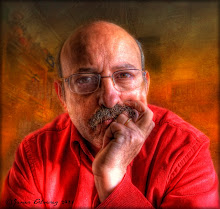Albert King - Blues For Elvis

mp3 320 + scans
Considerado uno de los Tres Reyes del Blues a la guitarra (junto a B.B.King y Freddie King), su altura de más de 1.90 metros y sus 118 kilos de peso le valieron el sobrenombre de The Velvet Bulldozer (la excavadora de terciopelo).
Nacido como Albert Nelson en una humilde familia de Indianola, Misisipi, en una plantación de algodón donde trabajó sus primeros años. Una de sus más tempranas influencias musicales fue su propio padre, Will Nelson, que tocaba la guitarra con asiduidad.
Durante su infancia cantó en un grupo familiar de Gospel en la iglesia local.
Su primer trabajo como profesional comenzaría con el grupo In the Groove Boys, en Osceola, Arkansas. Durante un tiempo también tocó la batería para la banda de Jimmy Reed. Pero su instrumento fundamental iba a ser la guitarra eléctrica, y su preferida fue la Gibson Flying V, a la que llamó Lucy.
Su primer éxito fue I´m a Lonely Man, aparecido en 1959. Pero no sería hasta 1961 cuando logró su primer gran éxito, con Don't Throw Your Love on Me So Strong, número catorce en las listas R&B. En 1966 firmó con la famosa discografía Stax y en 1967 apareció su legendario álbum Born Under A Bad Sign. La canción que dio el nombre al álbum (escrita por Booker T. Jones y William Bell) se convirtió en la canción más famosa de King y ha sido versionada por numerosos artistas (desde Cream hasta Homer Simpson). El 1 de febrero de 1968 King fue contratado por el promotor Bill Graham para una actuación en el Fillmore Auditorium en un concierto de varios artistas, entre los que estaba Jimi Hendrix. El concierto lo iniciaron los Soft Machine, teloneros de Hendrix durante varios conciertos de éste a principios de 1968. El público estaba impaciente por ver a King y a Hendrix y cuando Soft Machine empezaron a tocar, la gente empezó a gritar el nombre de Albert King. Eso provocó el enfado del promotor Graham, que salió al escenario y reprochó al público su falta de respeto hacia los artistas que tocaban en ese momento. Aquellos que asistieron al concierto relataron que que King se adueñó del recital, ya que la gente esperaba la electricidad de Hendrix pero King se los puso en el bolsillo gracias a sus mágicos dedos después de tocar un par de baladas. Uno de los grandes momentos fue cuando fue capaz de sustituir una cuerda que se le había roto sin dejar de tocar. Cuando Hendrix salío al escenario lo primero que dijo fue: Ok, Albert King, he cogido la indirecta. Y se puso a tocar algunos de los acordes de King como homenaje.
King influenció a muchos guitarristas de Blues como Jimi Hendrix, Eric Clapton, Mike Bloomfield, Gary Moore, y Stevie Ray Vaughan. El solo de guitarra de Eric Clapton en el éxito de Cream, Strange Brew ( del álbum Disraeli Gears) es una emulación del solo de King en su éxito con Stax, Oh, Pretty Woman.
Una de las últimas contribuciones de King sería en 1990 con el guitarrista Gary Moore en el álbum Still Got the Blues, con una nueva versión de Oh, Pretty Woman. Esta contribución conllevó a que King apareciera como invitado en los conciertos de una gira europea de Moore, junto a Albert Collins.
King falleció de un ataque cardíaco el 21 de diciembre de 1992, en Memphis, Tennessee. Su nombre está incluido en el Paseo de la Fama de St. Louis.
- "Hound Dog" (Leiber/Stoller) – 4:03
- "That's All Right" (Crudup) – 4:08
- "All Shook Up" (Blackwell/Presley) – 2:29
- "Jailhouse Rock" (Leiber/Stoller) – 3:36
- "Heartbreak Hotel" (Axton/Durden/Presley) – 6:05
- "Don't Be Cruel" (Blackwell/Presley) – 3:27
- "One Night" (Bartholomew/King/Steiman) – 4:18
- "Blue Suede Shoes" (Perkins) – 3:16
- "Love Me Tender" (Matson/Presley) – 5:19
Etiquetas: Musica






















